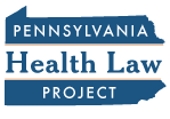CHIP On the Move
Pennsylvania Governor Tom Wolf has signed a bill that shifts responsibility for Pennsylvania’s Children’s Health Insurance Program (CHIP) from the state’s Insurance Department to its Department of Human Services (DHS).
 The move is designed to streamline the administration of the program and improve the delivery of services for the more than 150,000 children currently enrolled in CHIP.
The move is designed to streamline the administration of the program and improve the delivery of services for the more than 150,000 children currently enrolled in CHIP.
DHS already administers the state’s Medicaid program, which serves more than 2.5 million Pennsylvanians.
Go here to see a state news release announcing the change.






